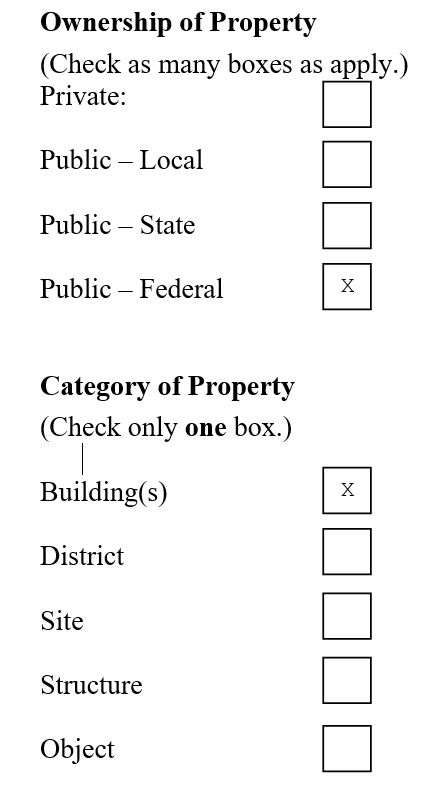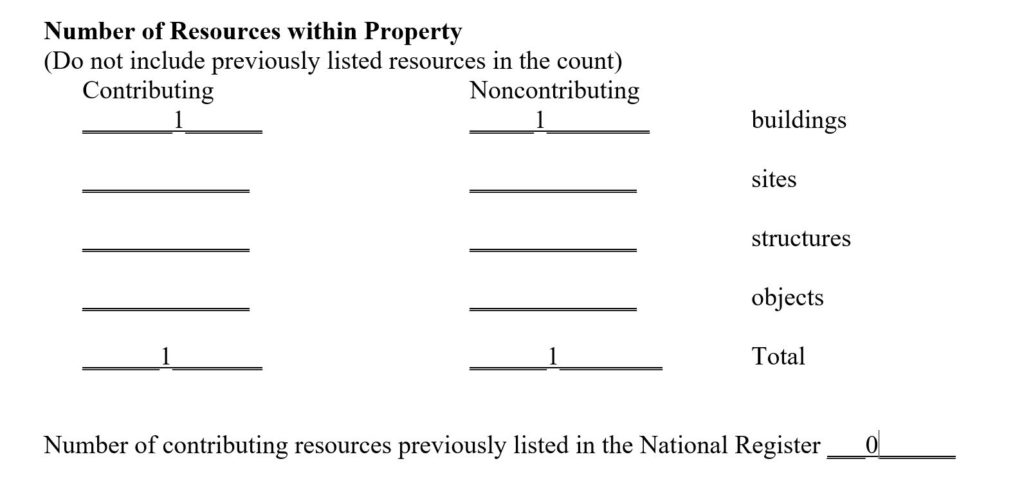National Register of Historic Places Registration Form – Question 5
5. Classification
How to complete the National Register of Historic Places states:
5. CLASSIFICATION
OWNERSHIP OF PROPERTY
Mark “x” in all boxes that apply to indicate ownership
Private: Property owned by an individual, group of people, or organized body such as a church, corporation, or Indian tribe.
Public-local: Property owned by a local government such as a municipality or county.
Public-State: Property owned by the State government.
Public-Federal: Property owned by the U.S. government. – this is the one that applies to us
CATEGORY OF PROPERTY
Mark “x” in the box for the kind of property being documented: building, district, site, structure, or object. Mark only one box. See National Register Property and Resource Types for definitions and examples.
NATIONAL REGISTER PROPERTY AND RESOURCE TYPES
| Type | Definition | Examples |
| BUILDING | A building, such as a house, barn, church, hotel, or similar construction, is created principally to shelter any form of human activity. “Building” may also be used to refer to a historically and functionally related unit, such as a courthouse and jail or a house and barn. |
houses, barns, stables, sheds, garages, courthouses, city halls, social halls, commercial buildings, libraries, factories, mills, train depots, stationary mobile homes, hotels, theaters, schools, stores, and churches. |
DETERMINING CONTRIBUTING AND NONCONTRIBUTING RESOURCES
The physical characteristics and historic significance of the overall property provide the basis for evaluating component resources. Relate information about each resource, such as date, function, associations, information potential, and physical characteristics, to the significance of the overall property to determine whether or not the resource contributes.
A contributing building, site, structure, or object adds to the historic associations, historic architectural qualities, or archeological values for which a property is significant because:
- it was present during the period of significance, relates to the documented significance of the property, and possesses historic integrity or is capable of yielding important information about the period. – this applies to the post office itself
A noncontributing building, site, structure, or object does not add to the historic associations, historic architectural qualities, or archeological values for which a property is significant because:
- it was not present during the period of significance, or does not relate to the documented significance of the property – this applies to the extension built at the back of the post office during the 1970’s



